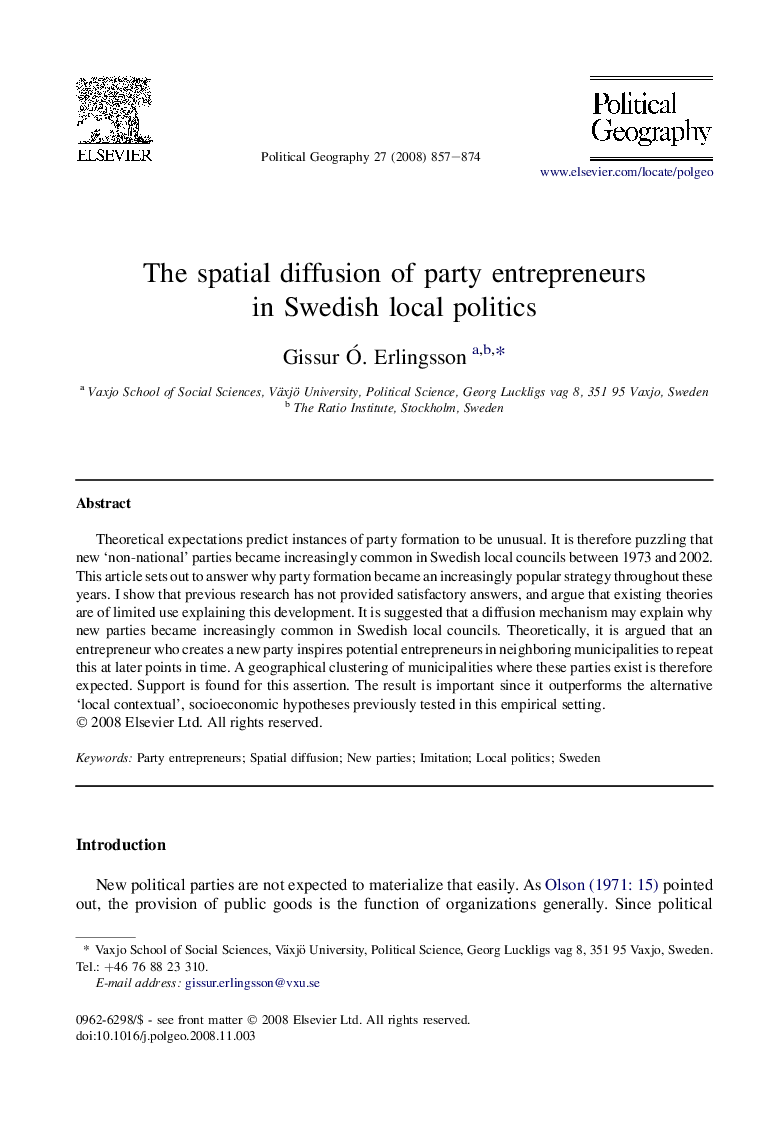| Article ID | Journal | Published Year | Pages | File Type |
|---|---|---|---|---|
| 1062400 | Political Geography | 2008 | 18 Pages |
Theoretical expectations predict instances of party formation to be unusual. It is therefore puzzling that new ‘non-national’ parties became increasingly common in Swedish local councils between 1973 and 2002. This article sets out to answer why party formation became an increasingly popular strategy throughout these years. I show that previous research has not provided satisfactory answers, and argue that existing theories are of limited use explaining this development. It is suggested that a diffusion mechanism may explain why new parties became increasingly common in Swedish local councils. Theoretically, it is argued that an entrepreneur who creates a new party inspires potential entrepreneurs in neighboring municipalities to repeat this at later points in time. A geographical clustering of municipalities where these parties exist is therefore expected. Support is found for this assertion. The result is important since it outperforms the alternative ‘local contextual’, socioeconomic hypotheses previously tested in this empirical setting.
